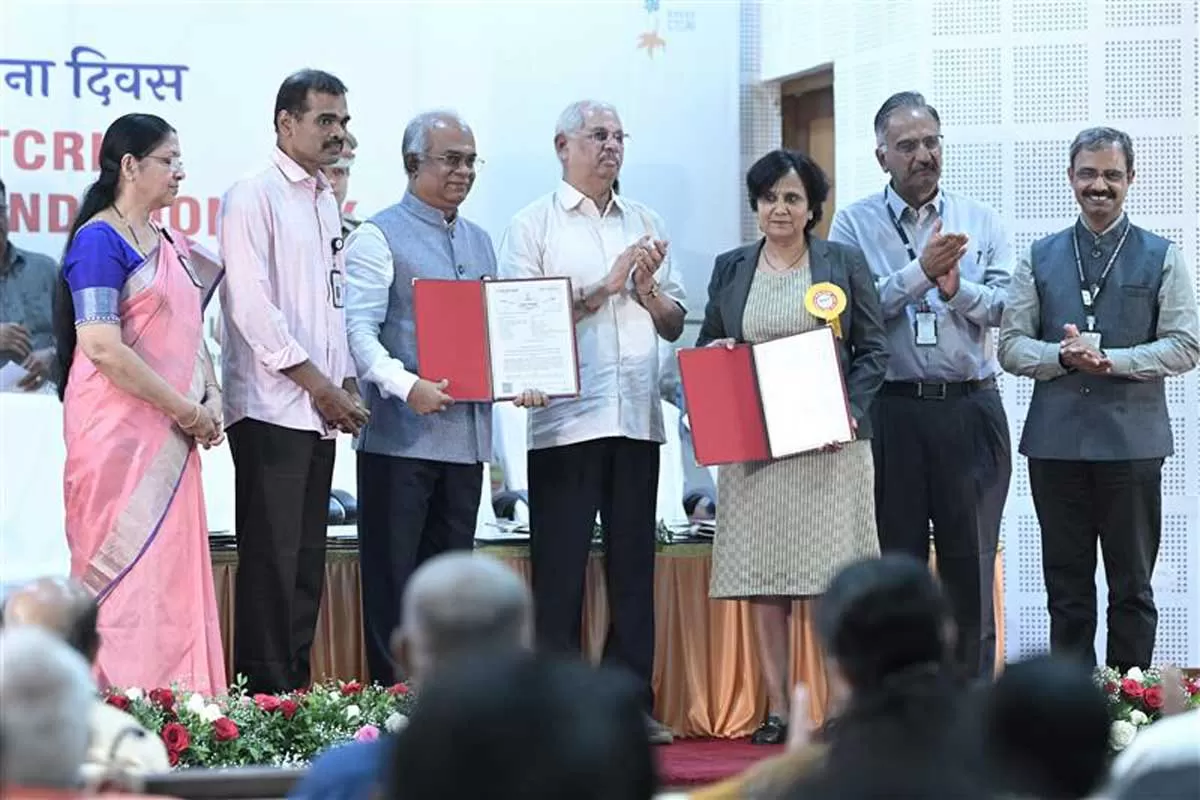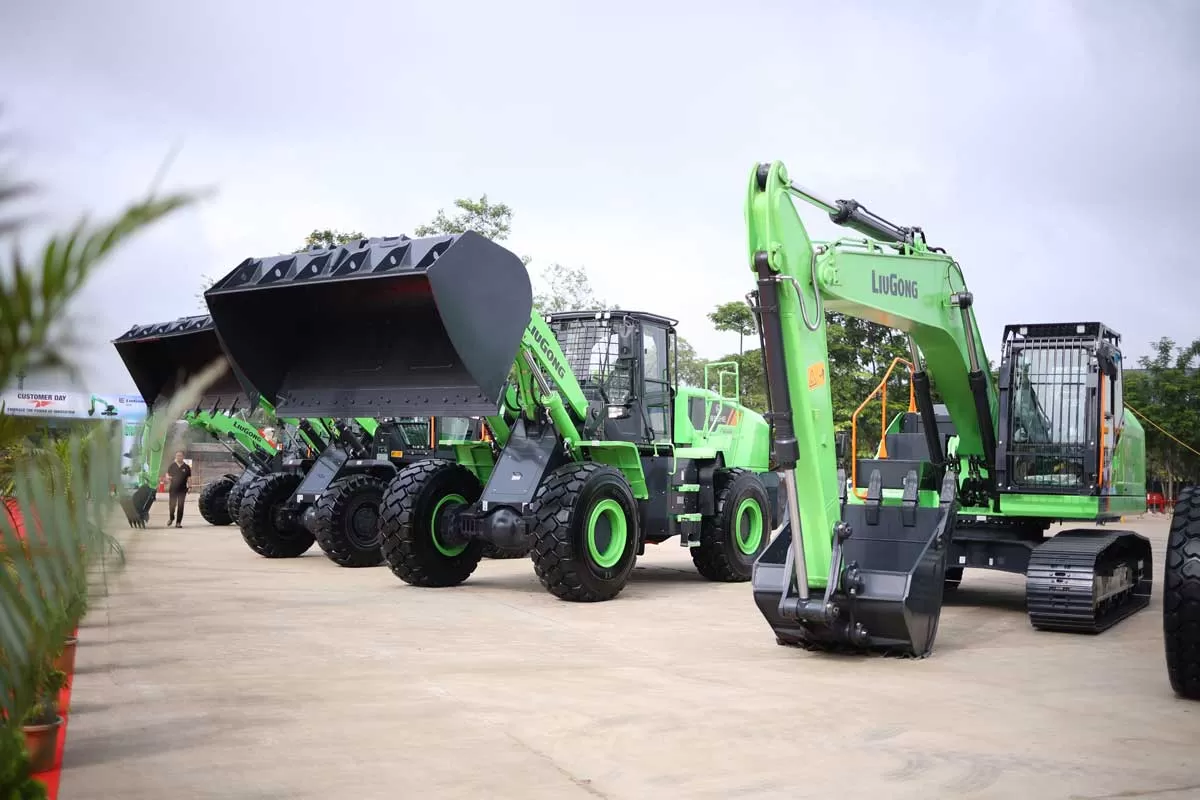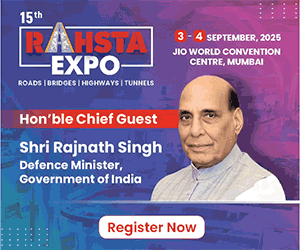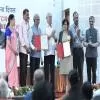The recently executed 302-km, six-lane Agra-Lucknow Expressway is a marvel completed in a record time of 23 months.
Fighter jets landing on an expressway? Incredible but true.
On November 21, 2016, the nation watched in awe as eight of them touched down and whizzed past on India's longest access-controlled expressway:
The Agra-Lucknow Expressway.
The UP Expressways Industrial Development Authority (UPEIDA) was entrusted with the development of this greenfield project in the EPC mode to provide a fast corridor and minimise travel time between the two cities; connect main townships and commercial centres; ensure development of adjoining areas; and facilitate development of the state by attracting investors.
Companies involved in the construction included Afcons Infrastructure, Larsen & Toubro (L&T), NCC and PNC Infratech.
Salient features
One of the most anticipated infrastructure projects in recent times, the expressway will cut down travel time between Agra and Lucknow from six hours to three-and-a-half. It can also be used for war-like, emergency situations. The 302-km, six-lane expressway has been built in a record time of 23 months, and has a design speed of up to 120 km per hour. As per UPEIDA, the expressway is expandable to eight lanes. Stretching across 10 districts, 232 villages and 3,500 hectare, it connects Agra and Lucknow via Firozabad, Mainpuri, Etawah, Auraiya, Kannauj, Kanpur Nagar, Unnao and Hardoi. It passes through four National Highways (NHs), two state highways, and five rivers.
Features of the expressway include an eight-lane bridge across river Ganga to connect Kanpur and Unnao, four RoBs, 13 major bridges, 57 minor bridges, 74 vehicular underpasses, 148 pedestrian underpasses and nine flyovers.
Longest stretch
One of many landmark projects for the company, Afcons executed 126 km of the expressway in two packages - Firozabad to Etawah (Package II) and Kannauj to Unnao (Package IV) - comprising almost 42 per cent of the total length including 58 underpasses, four rail over-bridges, eight flyovers, 29 minor bridges, 23 vehicular underpasses, six major bridges.
Like every other project, Afcons was able to maintain its impeccable track record of completing projects ahead of time. 'The project's scheduled completion period as per the contract was three years,' says Akhil Kumar Gupta, Executive Director-Operations, Afcons Infrastructure. 'However, keeping in view the aspirations of the client, the project was ready more than a year before time.'
Smart systems in use
The expressway is a prime example of the use of cutting-edge technology with innovations in planning on its road to completion. Gupta elaborates, 'PERI formwork, tailor-made to suit the requirements of typical structures, was implemented, which helped expedite the work.' Further, to expedite the construction of box structures, box culverts were constructed using precast technology. In addition, slabs of all large box structures up to 12 m span were executed using precast panels. ôThe remarkable progress was also the result of a proactive approach, with quick turnaround time for design approvals, etc, and highly effective supply chain management,ö he adds. Sophisticated computerised machinery was deployed to carry out the overall construction. Built at Rs 13,200 crore, the expressway has installed automatic traffic management systems, which aims to reduce road accidents and even help at the time of fog. The advanced traffic management system enables timely dissemination of information and safe and secure transit.
The Ganga bridge
The 750-m, eight-lane bridge on the Ganges involved the construction of 32 well foundations, an equal number of substructure in the form of pier or abutment and superstructure in precast box segments. Moreover, 450 precast box segments, each weighing about 70-90 mt, were cast in a fully automated precast yard setup along the project alignment.
To compress the completion schedule of this major bridge to 18 months, Afcons used two different types of superstructure and three different methods of superstructure erection on the same bridge. 'Thus, out of 30 spans, 25 spans were constructed with precast concrete box segments, and five spans in structural steel with composite deck slabs,' shares Gupta. He adds that as far as erection is concerned, 15 spans were launched with launching girder, 10 spans with ground support system and five spans of structural steel with high-capacity cranes. This is the case of high-level technical improvisations to achieve an extremely compressed target of 18 months for completing such a large bridge on the Ganges, perhaps a first-of-its-kind.
The 2,400-mt capacity launching girder was designed to handle 1,450 mt weight of precast box segments of a span of 50 m each. 'It is to the credit of the team spirit at site that a cycle time of just 3.1 days for launching one span of 50 m on this bridge was achieved,' lauds Gupta.
Challenge accepted!
The biggest challenge while executing the project was the large-scale mobilisation of resources and their effective management. ôOne of the biggest challenges was completing large bridges across major rivers such as the Ganges in a span of 18 months including two monsoons,ö explains Gupta. 'Reduction in scheduled completion date meant project activities were left with little float or sometimes even no float at all. Therefore, the construction of bridges continued even as heavy rains lashed the area. The team worked day and night to achieve the completion of major structures well within the advanced completion period.'
Further, after the work began, there was a considerable change in plans. While the structures were originally planned for six lanes, the configuration was changed to eight. Despite the changes being implemented, hardly any time was lost. 'The main carriageway along the entire contracted length was ready in record time, so was the structural work at all the major and minor bridges,' Gupta adds.
Another challenge was the sheer number of structures the project comprised. RoBs, flyovers, vehicular underpasses, pedestrian underpasses, major and minor bridges, had to be built along stretches of virgin land to complete the stretch of the expressway.
Eye on development
A tangible benefit of the expressway will be the transformation of regionally cities such as Mainpuri, Etawah and Unnao among others into robust industrial centres to bolster economic growth in the state. The expressway will help decongest some of the important NHs and decrease commute time between several cities.
On the national scale, the expressway will help attract investments into the region by assuring unhindered transport of business goods. It also contributes to the reduction of carbon footprint. Besides, Gupta adds, ôAfcons has made maximum utilisation of local labour to stimulate economic growth around the expressway by providing gainful employment to locals.'
Apart from changing the landscape, it also opens up several avenues for development and progress. With the country getting its longest expressway by far, it possesses the potential for the establishment of new institutes, smart cities and logistic parks, which in turn will generate more avenues for employment and development of the state, and the country at large.
Indeed, the success of a project of this magnitude offers confidence and hope to the infrastructure sector as a whole to take a step beyond the obvious, and make a mark in the progress of the country.
Unnao-Lucknow Expressway
L&T Construction won the mandate to construct a 63-km-long greenfield, six-lane, access controlled expressway from Unnao district (village Neval) to Lucknow on EPC basis. As per information shared by the company, the scope of work includes design, engineering and construction of the expressway, including the construction of service roads and a unique requirement of building a 4-km-long strip, which can be used as runways during emergencies. The contract also includes the construction of other major structures like 18 VUPs (vehicular under passes), four major bridges, 10 minor bridges, 26 pedestrian underpasses, a trumpet interchange and associated works. Originally scheduled to be completed in 36 months, L&T completed the project well ahead of schedule within 22 months and also created history on November 21, 2016 when six fighter planes successfully landed on the 4-km air strip which is part of the expressway.
Project Details
Length: 302-km-long;
Lanes: Six-lane
Completion: November 21, 2016
Total cost:Rs.13,200 crore
Completion period: 23 months
Implementing agency: UPEIDA.
Tel: 0522-230 7542.
Website: www.upeida.in
Construction contractors: Afcons Infrastructure.
Tel: 022-6719 1000.
Website: www.afcons.com; <rbe="font-weight: bold;">L&T.
Toll free: 1800 209 4545.
Website: www.larsentoubro.com;
NCC.
Tel: 040-2326 8888.
Website: www.ncclimited.com ;
PNC Infratech.
Tel: 0562-405 4400.
Website: www.pncinfratech.com
Agra to Firozabad Section (Package-I)
PNC Infratech executed the first section (Package-I) û from Agra to Firozabad û comprising 56 km of six-lane carriageway with eight-lane structures including a major bridge on river Yamuna, three minor bridges, 55 under-passes, more than 100 culverts and a trumpet. As shared by the company, several ancillary works and facilities such as toll and ramp plazas, service road, stormwater drainage, fencing, lighting, landscaping and plantation, are also part of the project. Apart from a large team of human resources, a huge fleet of state-of-the-art construction plant and machinery has been deployed by PNC Infratech to accomplish the task in record time. These include modern fully-automatic hot-mix plants, concrete batching plants, WMM plants, sensor pavers, heavy earth cutting and moving equipment, vibratory and pneumatic tyre rollers, kerb casing and painting machines, vast logistic fleet, cranes, rigs, boom placers, etc.
Etawah to Kannauj (Package-III)
NCC undertook the development of Etawah (Village Moonj) to Kannauj (Village Narmau) Package-III on EPC basis at Rs 1,731.22 crore.
As informed by the company, salient features include the main carriageway (MCW) and service road (SR). MCW is a 57-km six-lane highway that features 61 Hume pipe culverts; 59 box culverts; two major bridges; 14 minor bridges; 14 vehicular under passes; 29 pedestrian under passes; and metal beam crash barrier of 57 km on both sides. Moreover, a 3-m-wide median has been provided in the centre of the expressway. Also, safety devices such as road marking, traffic sign boards including over head gantry boards have been provided on the entire highway stretch. The 57 km two-lane SR includes 61 Hume pipe culverts; 52 box culverts; 14 minor bridges; and safety devices such as road marking, traffic sign boards, etc.
- SERAPHINA D'SOUZA























